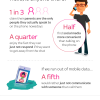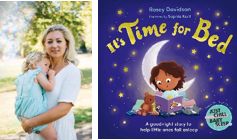
News Copy
Busy Brits ping millions of texts, WhatsApp and SnapChat messages every day – but save the old fashioned phone calls for mum.
A detailed study into modern ways of communicating revealed we are most likely to send texts to our partner, while our friends are the most likely recipients of WhatsApp messages.
Social media sites such as Facebook, Instagram and Twitter are also a popular choice
for friends to keep each other in the loop on a daily basis.
But mum is still the word when it comes to actually taking the time to have a traditional chinwag.
It also emerged more than half of the population find communicating through social media more convenient than talking on the phone.
Sophia Ahmad, Director of Sky Mobile, which commissioned the research, said “We have more people to keep in contact with now than ever before.
”But making a phone call isn’t always the most popular way of talking to friends, family and loved ones.
”For some, there will be people they never speak to over the phone, and instead only chat to you over sites like Facebook or through messaging.”
The study also found Brits now make just three calls a week from their landlines, usually to call mum.
But they will dial out 14 times on their mobile phones, with mum and their partner the most likely recipients of their calls.
It also emerged 24 text messages per week will be sent from their mobiles, as well as another 24 messages via WhatsApp.
But they’ll also send more than 40 emails each per week from their phones, with colleagues and businesses or companies as the most likely recipient.
It also emerged Brits have various ‘group chats’ with two friendship-based conversations, two for family members, one for work colleagues and one for a club or sports group.
A quarter of people also have several variations of group chats to exclude certain people, like a family group chat without the parents involved.
Unsurprisingly, the most common use for a group chat is just to keep up to date with what’s going on with their acquaintances.
But for 37 per cent, organising nights out are the most common topic of conversation, according to the research conducted through OnePoll.com.
The study also found one in three Brits claim that their parents are pretty much the only people they actually speak to on the phone nowadays.
And a quarter enjoy the fact they can simply end the conversation by not responding if they want to get away from the chat.
But if they ran out of mobile data, a fifth of adults would rather just not communicate with someone than pick up the phone to call them.
Sophia Ahmad added: ”With the nation relying more heavily on social media and WhatsApp to communicate, we wanted to offer our customers a savvy way to control their data usage.
”With Roll, unused data is automatically rolled into your Sky Piggybank each month, to use whenever you need it for up to three years.
”So you can dip in and out of your Piggybank and always ensure you have enough data to stay connected
ENDS
jQuery(document).ready(function($) {
// We only want these styles applied when javascript is enabled
$(‘.gal_content’).css(‘display’, ‘block’);
// Initialize Advanced Galleriffic Gallery
var gallery = $(‘#thumbs_29161_1’).galleriffic({
delay: 3500,
numThumbs: 12,
preloadAhead: 12,
enableTopPager: false,
enableBottomPager: false,
imageContainerSel: ‘#slideshow_29161_1’,
controlsContainerSel: ‘#controls_29161_1’,
captionContainerSel: ‘#caption_29161_1’,
loadingContainerSel: ‘#loading_29161_1’,
renderSSControls: true,
renderNavControls: false,
playLinkText: ‘Play Slideshow’,
pauseLinkText: ‘Pause Slideshow’,
enableHistory: 0,
autoStart: 0,
enableKeyboardNavigation: true,
syncTransitions: false,
defaultTransitionDuration: 300,
onTransitionOut: function(slide, caption, isSync, callback) {
slide.fadeTo(this.getDefaultTransitionDuration(isSync), 0.0, callback);
caption.fadeTo(this.getDefaultTransitionDuration(isSync), 0.0);
},
onTransitionIn: function(slide, caption, isSync) {
var duration = this.getDefaultTransitionDuration(isSync);
slide.fadeTo(duration, 1.0);
// Position the caption at the bottom of the image and set its opacity
var slideImage = slide.find(‘img’);
caption.fadeTo(duration, 1.0);
},
onPageTransitionOut: function(callback) {
//this.hide();
setTimeout(callback, 100); // wait a bit
},
onPageTransitionIn: function() {
var prevPageLink = this.find(‘a.prev’).css({‘opacity’: ‘0.3’ , ‘display’ : ‘inline-block’, ‘cursor’ : ‘default’});
var nextPageLink = this.find(‘a.next’).css({‘opacity’: ‘0.3’ , ‘display’ : ‘inline-block’, ‘cursor’ : ‘default’});
// Show appropriate next / prev page links
if (this.displayedPage > 0)
prevPageLink.css({‘opacity’ : ‘1’ , ‘display’ : ‘inline-block’, ‘cursor’ : ‘pointer’});
var lastPage = this.getNumPages() – 1;
if (this.displayedPage < lastPage)
nextPageLink.css({'opacity' : '1' , 'display' : 'inline-block', 'cursor' : 'pointer'});
this.fadeTo('fast', 1.0);
}
});
/**************** Event handlers for custom next / prev page links **********************/
gallery.find('a.prev').click(function(e) {
gallery.previousPage();
e.preventDefault();
});
gallery.find('a.next').click(function(e) {
gallery.nextPage();
e.preventDefault();
});
});



























